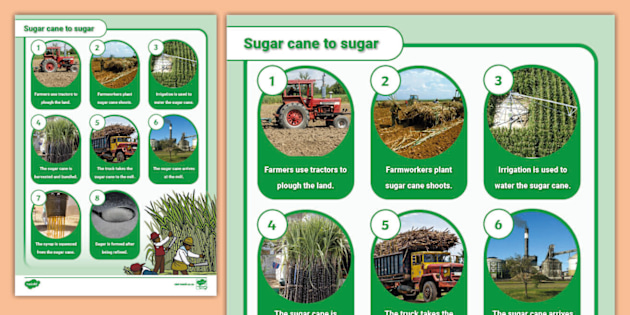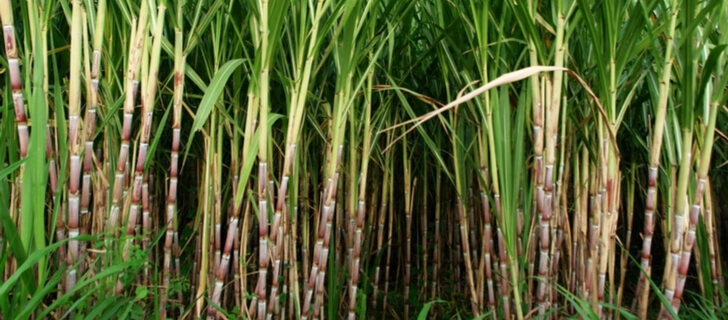What Are Sugar Canes Used For in Traditional Remedies and Folk Medicine
Unveiling the Relevance of Sugar Canes: What Are Sugar Canes Used For in the Walking Stick Sugar Industry?
Sugar canes function as the cornerstone of the walking stick sugar market, mostly providing the raw material needed for sugar manufacturing. Their ability to convert sunlight right into sucrose through photosynthesis is essential. Past their sweetening properties, sugar walking sticks find utility in different culinary applications and emerging fields. The full level of their effect extends beyond the kitchen. This conversation will explore the multifaceted duties of sugar walking sticks in both industry and economy.
The Function of Sugar Canes in Sugar Production
Sugar walking canes act as the fundamental resources in the walking cane sugar market, playing a crucial duty in the production procedure. These tall, seasonal turfs thrive in subtropical and exotic environments, where they take in sunshine and nutrients to produce sucrose. The harvesting of sugar walking canes commonly occurs when the plants get to maturation, optimizing their sugar content.Once gathered, the canes undertake crushing to draw out the juice, which includes liquified sugars. This juice is after that cleared up and concentrated via evaporation, changing it right into a syrup. Subsequently, formation happens, enabling the separation of sugar crystals from the staying syrup.The drawn out sugar undertakes additional refining to achieve the preferred pureness and high quality - What Are Sugar Canes Used For. As a result, the entire procedure highlights the crucial payment of sugar walking canes to sugar manufacturing, underscoring their relevance as both a raw product and a stimulant in the production of cane sugar

Diverse Applications in Food and Drink Industry
In the food and beverage industry, sugar walking cane offers multiple vital features. It acts not only as a primary sweetener in numerous products yet also as a flavor representative that improves taste accounts. Additionally, its components play a considerable role in fermentation and distillation procedures, adding to the manufacturing of alcoholic beverages.
Sugar in Products

The adaptability of cane sugar as a sugar makes it a staple in a broad variety of food and beverage items. Extensively utilized in baked products, it improves the taste and texture of cakes, cookies, and pastries by offering moisture and promoting browning throughout baking. In beverages, walking cane sugar is a popular choice for sweetening juices, teas, and sodas, enabling a well balanced taste profile. In addition, it serves as an important ingredient in sauces, dressings, and sauces, adding to a harmonious mix of tastes. Walking cane sugar's capability to liquify quickly and its constant sweetness account even more strengthen its role as a favored sugar - What Are Sugar Canes Used For. In general, its diverse applications highlight the essential duty of cane sugar in the cooking landscape
Seasoning Representative Use
Using walking stick sugar as a flavoring representative expands beyond its function as a simple sweetener, enhancing a range of cooking productions. In the food and beverage industry, it enhances taste accounts by balancing acidity and bitterness, making it a necessary part in sauces, marinates, and dressings. Additionally, walking cane sugar adds to the total mouthfeel, providing an enjoyable appearance in baked items and confections. Its caramelization during cooking includes deepness to both sweet and full-flavored recipes, while likewise serving as a chemical in jams and jellies. In beverages, cane sugar is used to amplify tastes in mixed drinks and soft drinks, guaranteeing a more pleasurable alcohol consumption experience. This versatility highlights its significance in diverse culinary applications.
Fermentation and Purification
Cane sugar plays a significant function in fermentation and distillation procedures, which are essential in generating a selection of alcoholic beverages and food products. During fermentation, yeast converts sugars right into alcohol and co2, a basic action in crafting beverages like rum and vodka. Purification additionally purifies these alcoholic blends, raising and concentrating flavors alcohol web content. Beyond drinks, cane sugar is likewise essential in producing vinegar and particular artificial additive with fermentation. The flexibility of cane sugar improves the taste profiles and quality of these items, making it indispensable in the food and beverage market. Its contribution not just supports conventional approaches however likewise fosters development in crafting brand-new tastes and experiences for customers.
Sugar Canes in Biofuel Production
As passion in renewable resource sources expands, sugar walking canes are progressively acknowledged for their possibility in biofuel manufacturing. The biomass acquired from sugar walking canes can be transformed into ethanol, a sustainable fuel alternative that lowers greenhouse gas emissions compared to nonrenewable fuel sources. This process generally entails fermenting this hyperlink the sugar removed from the walking cane, which is after that distilled to generate high-purity ethanol appropriate for use in vehicles.Additionally, sugar walking stick bagasse, the coarse residue left after juice removal, can be utilized as a feedstock for bioenergy. It can be shed to generate steam and power, adding to power self-sufficiency in sugar mills. Nations such as Brazil have effectively integrated sugar cane biofuel into their energy policies, resulting in minimized reliance on imported gas - What Are Sugar Canes Used For. Overall, sugar walking sticks represent a promising avenue for biofuel manufacturing, aligning agricultural methods with ecological sustainability objectives
Industrial Uses of Sugar Canes
While often acknowledged mostly for sugar manufacturing, sugar walking canes also have diverse commercial applications that prolong well beyond the food sector. The fibrous results of sugar walking stick, understood as bagasse, work as a beneficial resource in various markets. Bagasse is typically utilized as a biofuel, generating power in sugar mills and various other facilities. In addition, it can be refined right into paper, cardboard, and naturally degradable materials, promoting lasting practices.In addition, sugar walking canes contribute to the manufacturing of molasses, a result utilized in the fermentation procedure for creating alcohol and yeast. This versatility makes sugar walking canes important to the drink and pharmaceutical markets. Sugar walking cane extracts are utilized in the cosmetics sector, giving natural components for skin care and charm products. Generally, the commercial uses sugar canes highlight their relevance past sugar, showcasing their function in promoting sustainability and supporting various markets.
Economic Effect of Sugar Cane Farming
The financial impact of sugar cane cultivation is substantial, mainly via task production and export income generation. This industry not only gives work opportunities in backwoods yet additionally contributes significantly to nationwide economic climates by means of exports. Recognizing these elements highlights the crucial role sugar walking stick plays in both local and global markets.
Work Production Opportunities
Although often forgotten, the sugar walking stick market plays a crucial duty in job creation, significantly influencing neighborhood economic situations. The growing, harvesting, and processing of sugar walking cane create numerous employment possibility, from field workers to manufacturing facility personnel. In lots of regions, these work offer resources for countless families, adding to area stability and development. In addition, supplementary industries such as transport, devices production, and retail gain from the sugar walking stick sector, more broadening employment alternatives. Seasonal work throughout planting and harvest also sustains temporary placements, allowing workers to earn income in or else lean durations. In general, the sugar walking stick market works as a crucial financial engine, promoting task production and enhancing the lifestyle for several people and neighborhoods.
Export Earnings Generation

Sustainable Practices in Sugar Walking Cane Farming
While conventional sugar walking stick farming practices have actually commonly led to environmental deterioration, a growing variety of farmers are adopting lasting approaches that focus on environmental equilibrium. These techniques include plant turning, which boosts dirt fertility and minimizes parasite episodes, and making use of organic fertilizers to lessen chemical overflow. Furthermore, some farmers are executing integrated insect monitoring techniques, which concentrate on utilizing natural predators and biopesticides as opposed to damaging chemicals.Water conservation strategies, such as drip watering, are additionally acquiring additional hints grip, enabling efficient water use while maintaining crop health and wellness. Additionally, several farmers are buying sustainable power sources, such as biomass from sugar cane waste, to power operations and minimize their carbon impact. These sustainable techniques not just safeguard environments yet also boost the long-lasting stability of sugar walking stick farming, making certain that it can remain to satisfy international sugar needs while decreasing environmental effect.
Regularly Asked Concerns
Just How Are Sugar Canes Harvested and Processed?
Sugar walking canes are gathered using manual methods or mechanical cutters, after that moved to factories. There, they undertake cleaning, squashing, and removal processes to get juice, which is then clarified, vaporized, and taken shape into sugar.
What Is the Nutritional Worth of Sugar Walking Cane?
The dietary value of sugar walking cane consists of carbohydrates, primarily in the form of sucrose, along with trace quantities of nutrients like calcium and potassium. Nevertheless, it is low in protein and fat material in general.
Can Sugar Walking Cane Be Expanded in Non-Tropical Regions?
Sugar cane can be grown in non-tropical regions, but it calls for details conditions such as appropriate warmth, moisture, and suitable soil. Adjustment and cultivation practices are crucial for successful development outside standard tropical climates.

What Insects and Diseases Influence Sugar Walking Stick Crops?
Illness and parasites considerably affect sugar cane plants. Common hazards consist of the sugarcane borer, red rot, and mosaic infection, which can lower yield and top quality, demanding reliable administration practices to secure these vital farming sources.
Exactly How Does Sugar Cane Farming Influence Citizen Communities?
Sugar walking cane farming significantly influences regional neighborhoods by giving employment possibility, promoting financial development, and sustaining regional organizations. However, it can likewise result in social difficulties and ecological concerns, affecting neighborhood health and sustainability. Sugar canes offer as the foundation of the walking cane sugar industry, primarily supplying the raw material required for sugar manufacturing. Sugar walking sticks serve as the foundational raw material in the cane sugar sector, playing an important role in the manufacturing process. The harvesting of sugar canes typically occurs when the plants get to maturation, maximizing their sugar content.Once harvested, the walking sticks go through squashing to draw out the juice, which contains dissolved sugars. While usually recognized primarily for sugar manufacturing, sugar walking sticks additionally have varied industrial applications that expand well past the food field. As worldwide demand for sugar continues to increase, countries abundant in sugar walking cane sources take advantage of on this chance, exporting raw sugar and refined items to global markets.